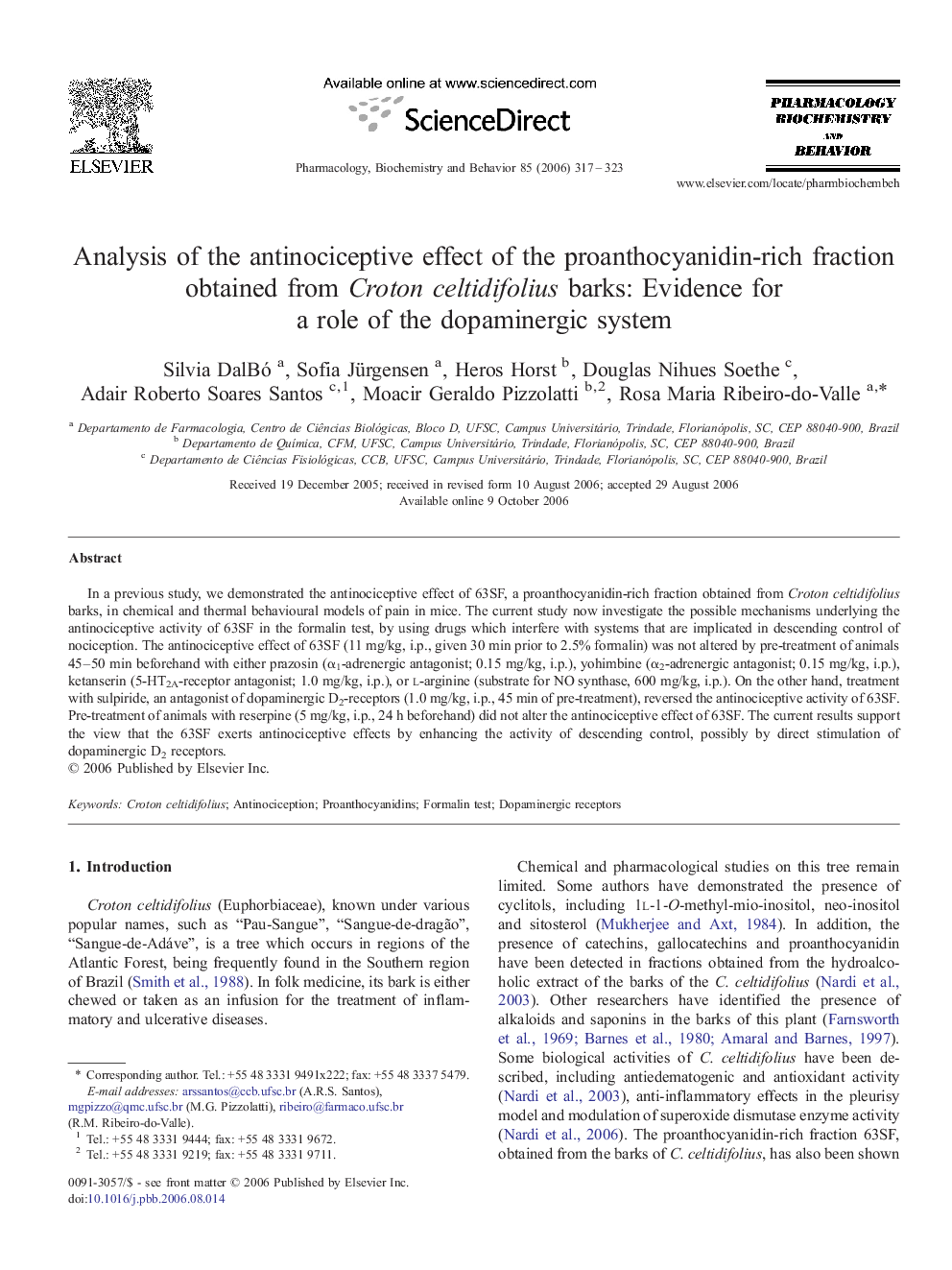| Article ID | Journal | Published Year | Pages | File Type |
|---|---|---|---|---|
| 2014182 | Pharmacology Biochemistry and Behavior | 2006 | 7 Pages |
Abstract
In a previous study, we demonstrated the antinociceptive effect of 63SF, a proanthocyanidin-rich fraction obtained from Croton celtidifolius barks, in chemical and thermal behavioural models of pain in mice. The current study now investigate the possible mechanisms underlying the antinociceptive activity of 63SF in the formalin test, by using drugs which interfere with systems that are implicated in descending control of nociception. The antinociceptive effect of 63SF (11 mg/kg, i.p., given 30 min prior to 2.5% formalin) was not altered by pre-treatment of animals 45-50 min beforehand with either prazosin (α1-adrenergic antagonist; 0.15 mg/kg, i.p.), yohimbine (α2-adrenergic antagonist; 0.15 mg/kg, i.p.), ketanserin (5-HT2A-receptor antagonist; 1.0 mg/kg, i.p.), or l-arginine (substrate for NO synthase, 600 mg/kg, i.p.). On the other hand, treatment with sulpiride, an antagonist of dopaminergic D2-receptors (1.0 mg/kg, i.p., 45 min of pre-treatment), reversed the antinociceptive activity of 63SF. Pre-treatment of animals with reserpine (5 mg/kg, i.p., 24 h beforehand) did not alter the antinociceptive effect of 63SF. The current results support the view that the 63SF exerts antinociceptive effects by enhancing the activity of descending control, possibly by direct stimulation of dopaminergic D2 receptors.
Related Topics
Life Sciences
Biochemistry, Genetics and Molecular Biology
Biochemistry
Authors
Silvia DalBó, Sofia Jürgensen, Heros Horst, Douglas Nihues Soethe, Adair Roberto Soares Santos, Moacir Geraldo Pizzolatti, Rosa Maria Ribeiro-do-Valle,
